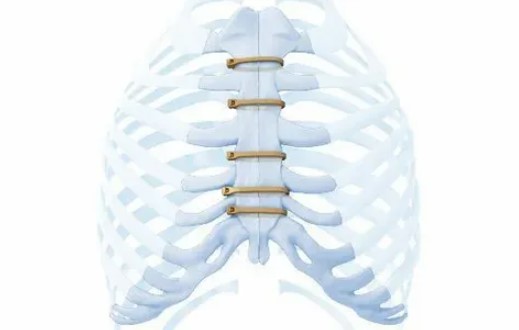
When undergoing cardiac surgery, sternotomy, or the surgical opening of the sternum, is a common procedure that provides surgeons with access to the heart and major blood vessels. After the surgery, the sternum must be securely closed to protect the heart and ensure proper healing. This process is known as sternal closure, and it involves the use of various techniques and devices. In this article, we will explore the different methods of sternal closure, the devices used, and the recovery process.
What is Sternal Closure?
Sternal closure is the process of rejoining the two halves of the sternum, or breastbone, after sternotomy. The sternum is a flat bone that connects the ribs in the front of the chest and protects the heart, lungs, and major blood vessels. During cardiac surgery, the sternum is divided in the middle to gain access to the heart and surrounding tissues. Once the surgery is complete, the sternum must be securely closed to allow for proper healing and to protect the heart and surrounding structures.
Request a PDF Sample Copy: https://www.fortunebusinessinsights.com/enquiry/request-sample-pdf/sternal-closure-systems-market-102039
Techniques of Sternal Closure
There are various techniques used to close the sternum after cardiac surgery. The most common techniques are wire closure, figure-of-eight closure, and plate closure.
Wire Closure
Wire closure is the most traditional and widely used technique for sternal closure. It involves the use of stainless steel wires to close the sternum. The wires are passed through the sternum and twisted together to hold the two halves of the bone in place. Wire closure is simple, cost-effective, and has a low risk of infection.
Figure-of-eight Closure
Figure-of-eight closure is another technique used for sternal closure. It involves the use of a heavy suture material that is passed through the sternum and tied in a figure-of-eight pattern. This technique provides stronger sternal stability compared to wire closure and is less likely to cause sternal dehiscence, a complication that occurs when the two halves of the sternum separate.
Plate Closure
Plate closure is a newer technique that involves the use of rigid plates and screws to close the sternum. The plates are placed on the outside of the sternum and held in place with screws. This technique provides the strongest sternal stability and is commonly used in high-risk patients who are at risk of sternal dehiscence.
Devices Used for Sternal Closure
There are various devices used to aid in sternal closure. These devices include sternal retractors, wire twisters, and plate systems.
Sternal Retractors
Sternal retractors are used during cardiac surgery to hold the sternum apart and provide access to the heart and surrounding tissues. They come in different sizes and shapes, depending on the patient’s anatomy and the surgeon’s preference.
Wire Twisters
Wire twisters are used to twist the wires together during wire closure. They come in different sizes and shapes, depending on the size of the wires used.
Plate Systems
Plate systems are used during plate closure. They consist of a rigid plate and screws that are used to stabilize the sternum. Plate systems come in different sizes and shapes, depending on the patient’s anatomy and the surgeon’s preference.
Recovery from Sternal Closure
After sternal closure, patients are monitored closely in the ICU and then transferred to a regular hospital room. Pain management is an important part of recovery, and patients are given pain medication as needed. Patients are also encouraged to move and breathe deeply to prevent complications such as pneumonia and blood clots. The length of hospital stay depends on the patient’s overall health and the complexity of the surgery.
